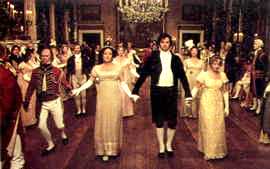
|
| Home |
| FAQs |
| Classes: Country |
| Classes: Highland |
| Events |
| About Scottish Country Dancing |
| About Highland Dancing |
| Music |
| Contact us |
| Links |
| Credits |
RSCDS Brighton Branch
The history of Scottish country dancing

Scottish country dancing (SCD) has a long history, related to both English country dancing and the court dancing of Europe, France in particular. In the 18th century England had its country dances and Scotland had its reels. Scots also danced country dances and the English danced Scottish reels, there was no clear demarcation line. At the end of 18th century and the beginning of the 19th century, (Jane Austen’s period) Britain was greatly influenced by the French dancing tradition and individual French dancing masters. This came to a head in the 1820’s when the French Quadrille tradition became all the rage across the country.
The 19th century saw continual change in both what was danced, and the style of dancing. In Scotland at the beginning of the century, people went to dance classes, wore soft shoes and danced with pointed toes. By the First World War, dancing was done in hard shoes and the style was lower. When Miss Milligan and Mrs Stewart founded the Scottish Country Dance Society in 1923, their motivation was to resurrect the old traditional dances and recreate a more authentic early 19th century style. That is why today we wear soft shoes and once again point our toes!
Most of the dances performed today are country dances, danced in sets of 4 couples in a longwise set. Square dances, reminiscent of single-figure quadrilles, are also danced. The most popular rhythms are jig, reel, and strathspey. Jigs and reels use basically three different steps and strathspeys use two. There are other traditional steps, but they are used in relatively few dances, for example the Glasgow Highlanders.
Although most non-Scots who dance take it up as adults, Scots still learn dancing at school. Most Scottish weddings will have an evening dance where everyone will be expected to know the Dashing White Sergeant and Strip the Willow as well as the old-time dances such as the Gay Gordons, the Canadian Barn Dance, and St Bernard’s Waltz. These ‘social’ couple dances are often called ‘ceilidh dances’. The RSCDS continues to research and collect old dances, while publishing newly devised dances as well.
Susanna Hawkins, 2002
See also
RSCDS (headquarters), What is Scottish country dancing?
RSCDS Tunbridge Wells web page on History.